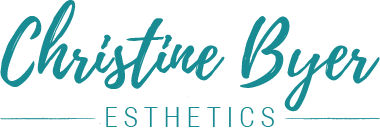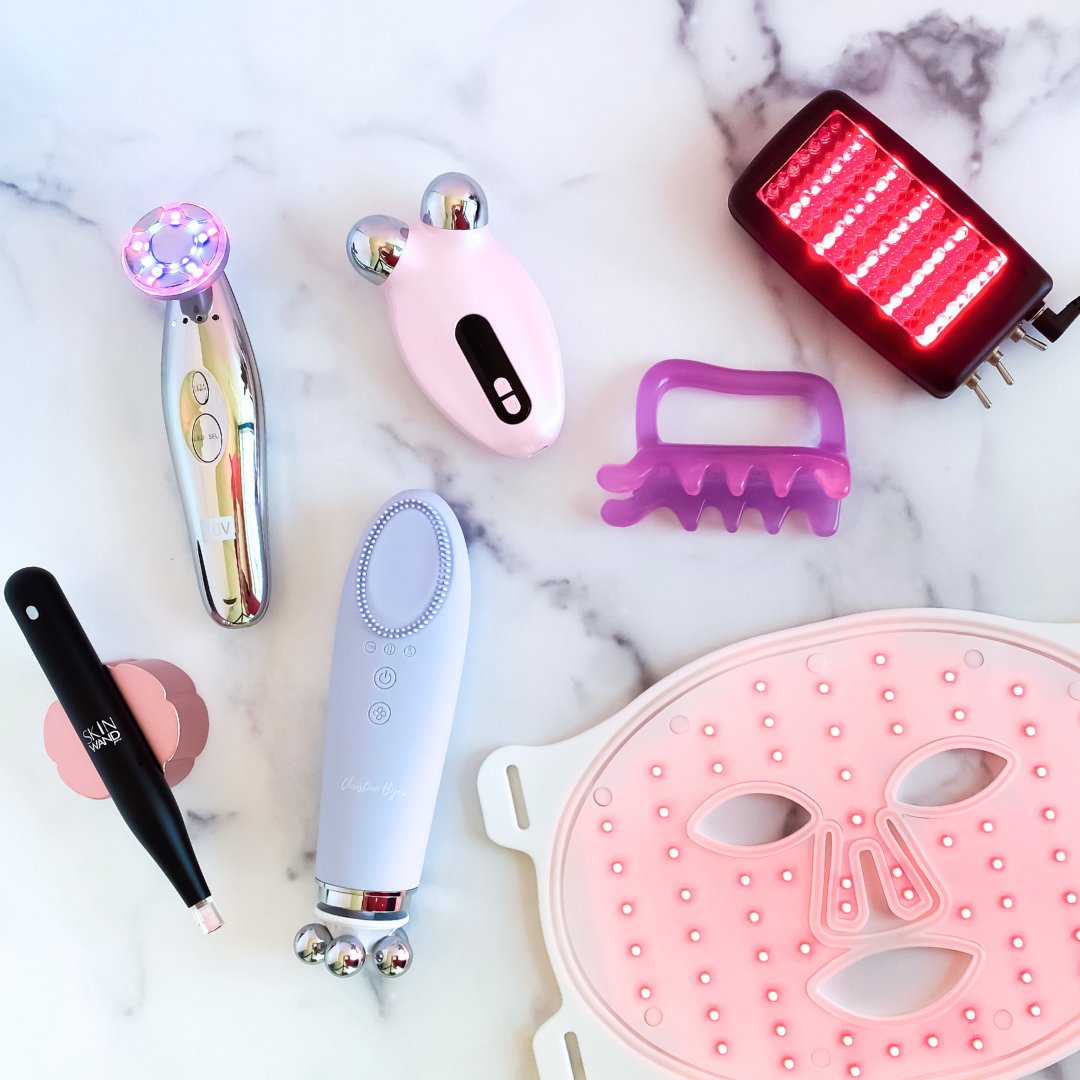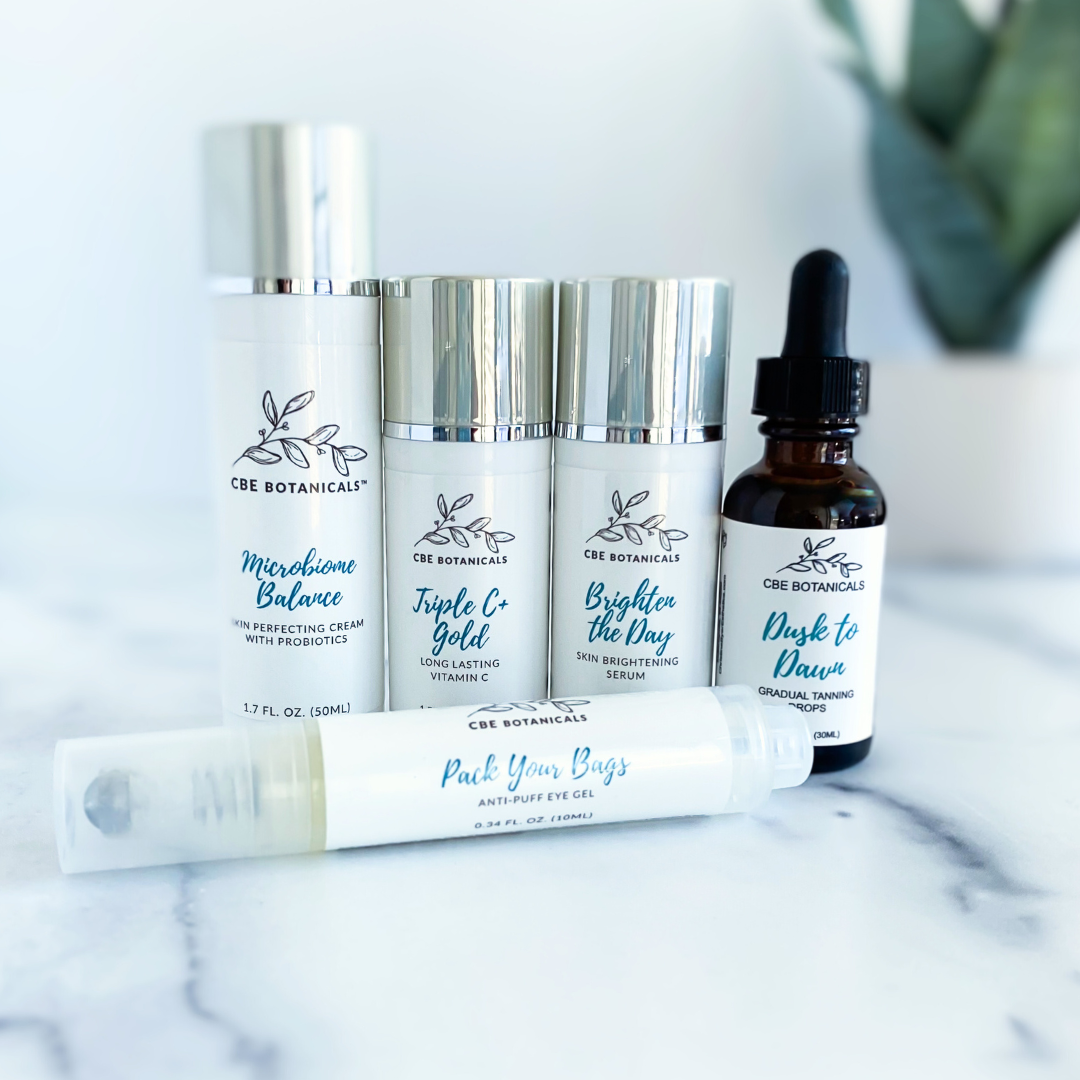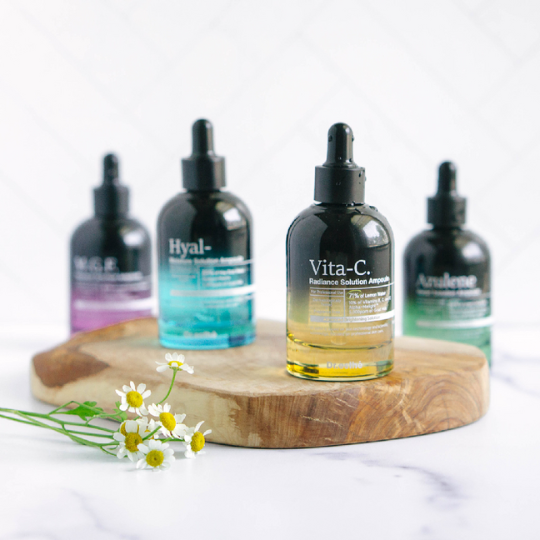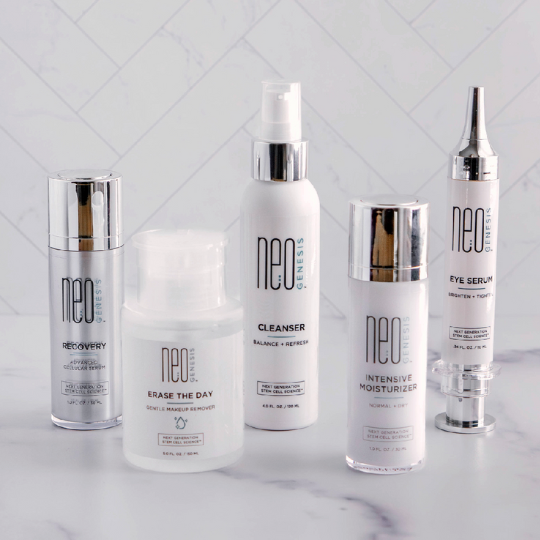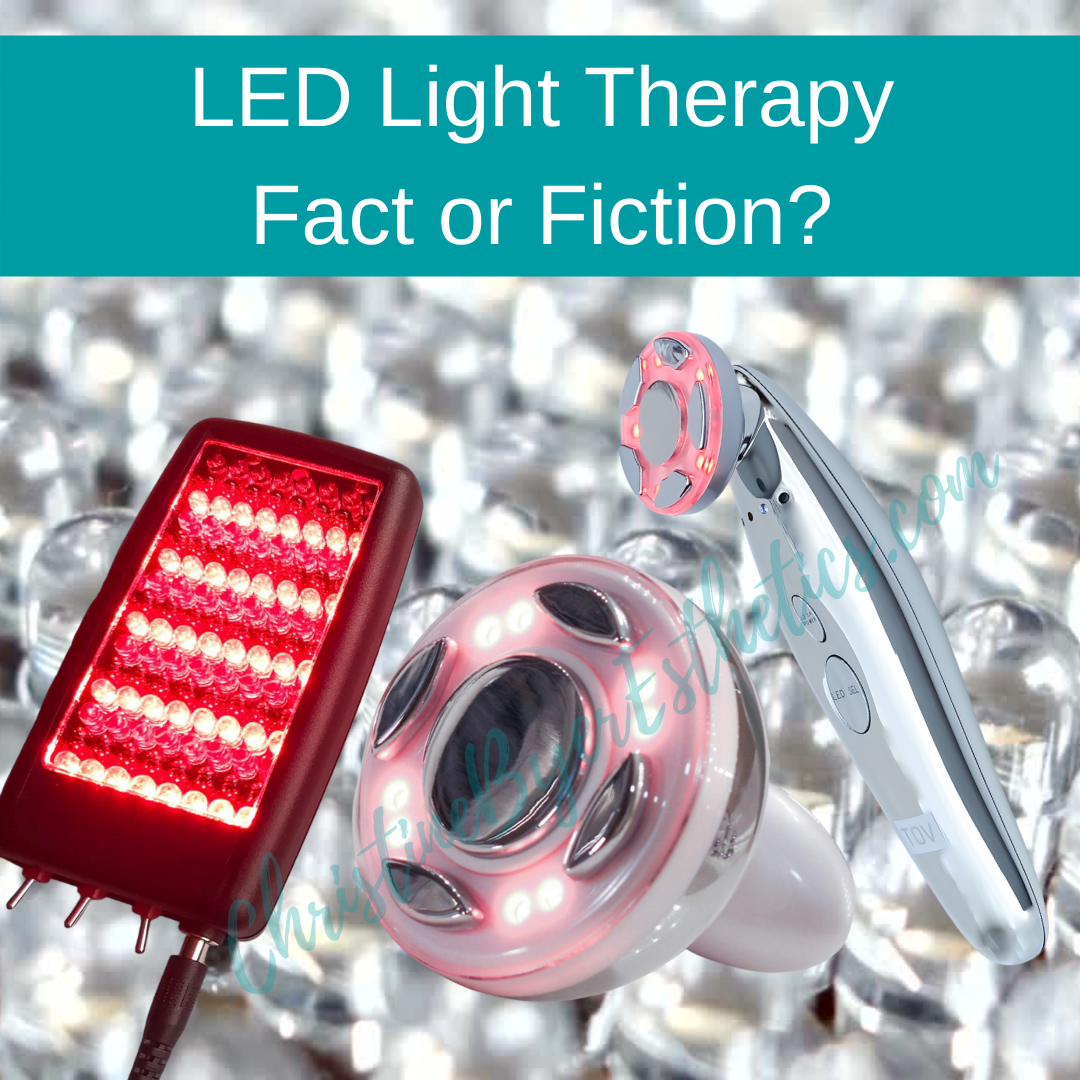If you've heard of LED in skincare, you may be wondering if it's right for you or if it's just a big waste of time. You may also be wondering if one LED color is better than another. If so, how does this impact your use of LED. Can you use too much LED? We answer these questions and more in this article.
In the early 1990s LED (Light Emitting Diode) Light Therapy was successfully used by scientists to help grow plants in space. It was then further studied for it’s potential in medicine as it relates to increasing energy inside human cells. The research has indicated the efficacy of LED is fact.
In this article, we'll look at the benefits of LED on the infrared, red, yellow, green, and blue spectrums as it relates to skincare. The spectrum (varying wavelengths) of LED light ranges from 380nms to 2,500 nms (see below).

All LED works by increasing the function of mitochondria so a cell can make more ATP (adenosine triphosphate). As we age, dermal levels of ATP decline and this creates an energy deficiency, thereby affecting skin appearance. LED increases the energy cells need to function more efficiently, rejuvenate, and repair damage.
Each color of LED provides certain benefits to the skin. I've narrowed this down for ease of reading.
Infrared (IR) LED light therapy of 850nms penetrates 2-3 inches and has a different effect on the cells. It seems to increase circulation and make the body release nitric oxide to increase blood flow in the area treated. This soothes and heals sore muscles and joints. IR LED light therapy speeds the healing of bruises, cuts, deep muscle relief and penetrates deeper than Red LED.
IMPORTANT: Infrared cannot be seen by the human eye AND CAN CAUSE DAMAGE TO THE EYE. Do NOT look into the light of an infrared device.
Red LED light therapy at 660 nms penetrates the skin 1/2 to 3/4 inches and decreases skin inflammation, smooths skin tone, repairs sun damage, fades scars and stretch marks, and even builds collagen in the skin, which reduces wrinkles. Red is the most effective color of LED for boosting collagen.
Yellow LED light therapy encompasses the range of wavelengths from 570 nm to 620 nms. Yellow LED has a shallow skin penetration but is effective in the treatment of skin issues. skin redness and flushing, irritation, rosacea, UV radiation damage, and reducing the appearance of the tiny blood vessels on the nose and face. It excels in the treatment of problems such as sun damage. Yellow LED light therapy is often considered to be an ideal therapy for sensitive skin, as its therapy is calming and soothing.
Green LED light therapy at 525 nms helps to lighten hyper-pigmentation spots revealing a brighter complexion. The calming effect also has anti-inflammatory properties that soothe the surface of the skin. Green LED is used to treat dilated capillaries, sagging skin around the eyes, under-eye circles, hyperpigmentation and sunspots.
Blue LED light therapy at 450 - 500 nms works by killing the bacteria responsible for some acnes. Propionibacterium is the bacteria that lives below the surface of the skin and is responsible for some acne. NOTE: If this isn’t the source of your acne, Blue LED may not help. Blue LED light therapy can also treat other types of skin disorders. It can be used to improve skin texture and reduce sebaceous hyperplasia or enlarged oil glands. It can help with sunspots, acne, and even scars that were originally caused by acne.
Summary: Incorporating a 5-minute LED treatment into your skincare routine just twice weekly can accelerate your skincare results. Full penetration of LED happens in only 3 - 5 minutes.
Do not use LED if you have makeup or sunscreen on your skin. This will prevent the penetration by blocking the light waves. While sunscreen is designed to block UVA and UVB light, it can also stop LED light from penetrating.
Applying retinol AFTER LED light therapy can boost the benefits but do NOT use it BEFORE LED because that can cause unexpected skin reactions and irritation. LED will help products penetrate better following an LED treatment.
Prior to using LED, be gentle to the skin. In other words, don't irritate it with extreme physical exfoliation such as scrubs that can leave the skin in a fragile state. A gentle chemical exfoliation is fine if it doesn't leave the skin in an irritated state. A cleanse with a non-drying cleanser is ideal. Use LED and then proceed with your regular skincare routine applying lightweight serums first, then a moisturizer, and if going outside a sunscreen.
WARNING: Do not overuse LED as it can have adverse results overworking the skin making it look lackluster. More is not better with LED. The only exception to this rule is using infrared for sore muscles. Infrared can be left on sore muscles for up to 15 minutes.
Note: This article is not intended as medical advice. Please seek the advice of a medical professional if you think you have a health condition before using any new modality.
Links to Studies/Reports:
Low-Level Laser Therapy (LLLT) as an Effective Therapeutic Modality for Delayed Wound Healing
Builds Collagen – Reduction of Fine Lines, Wrinkles, Skin Roughness.
Want to get support with your skincare journey? Join us at the Christine Byer Beauty Club. We offer a 14-Day FREE Preview with full access to everything in the Club. Ask Christine questions and have access to savings and the opportunity to win a FREE consultation. If you don’t find value in your membership, cancel within the 14 days at no charge.
